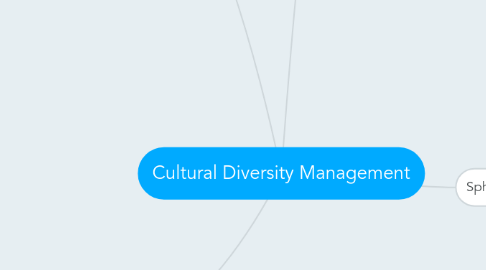
1. Focus on creating a Competitive Advantage
1.1. Cost
1.1.1. "inevitability-of-diversity" issue
1.1.2. organization continues to diversify
1.1.2.1. the cost of a poor job in integrating workers
1.1.2.1.1. will increase
1.1.3. implications in
1.1.3.1. benefits
1.1.3.2. work schedule
1.2. Resource Acquisition
1.2.1. "inevitability-of-diversity" issue"
1.2.2. consists in
1.2.2.1. attracting and retaining excellent employees
1.2.2.1.1. from
1.2.3. companies develop reputations
1.2.3.1. on
1.2.3.1.1. favorability
1.3. Marketing
1.3.1. are becoming as diverse as the workforce
1.3.2. companies with good reputations
1.3.2.1. have
1.3.2.1.1. correspondingly favorable public relations
1.3.3. culture
1.3.3.1. has a significant effect
1.3.3.1.1. on
1.4. Creativity
1.4.1. work team heterogeneity
1.4.1.1. promotes
1.4.1.1.1. creativity
1.4.1.1.2. innovation
1.5. Problem-solving
1.5.1. heterogeneity
1.5.1.1. produces
1.5.1.1.1. better decisions
1.5.1.1.2. more thorough critical analysis of issues
1.5.1.1.3. best ways to solve problems
1.6. Organizational flexibility
1.6.1. system will become
1.6.1.1. less determinant
1.6.1.2. less standardized
1.6.1.3. more fluid
1.6.1.3.1. greater flexibility
2. Suggestions for Organization Change
2.1. Pluralism
2.1.1. reciprocal acculturation where all groups
2.1.1.1. respect
2.1.1.2. value
2.1.1.2.1. learn from each other
2.2. Full Structural Integration of All Cultural Groups
2.2.1. seeking a good representation
2.2.1.1. within
2.2.1.1.1. the organization
2.3. Full Integration of Minority Culture-Group Members
2.3.1. in
2.3.1.1. the informal networks of the organization
2.4. Absence of Prejudice and Discrimination
2.5. Equal Identification of
2.5.1. Minority Groups
2.5.2. Majority Groups
2.6. Minimum of Inter-Group Conflict based on
2.6.1. race
2.6.2. gender
2.6.3. nationality
2.6.4. other identity groups of organization members
3. Spheres of Activity
3.1. Organization Culture
3.1.1. valuing differences
3.1.2. prevailing value system
3.1.3. cultural inclusion
3.2. HR Management Systems
3.2.1. recruitment
3.2.2. training and development
3.2.3. performance appraisal
3.2.4. compensation and benefits
3.2.5. promotion
3.3. Higher Career Involvement of Women
3.3.1. dual career couples
3.3.2. sexism and sexual harrasment
3.3.3. work-family conflict
3.4. Heterogeneity in Race/Ethnicity/Nationality
3.4.1. effect on
3.4.1.1. cohesiveness
3.4.1.2. communication
3.4.1.3. conflict
3.4.1.4. morale
3.4.2. effects of group identity on interactions
3.4.2.1. e.g. stereotyping
3.4.3. prejudice
3.4.3.1. racism
3.4.3.2. ethnocentrism
3.5. Education Programs
3.5.1. improve public schools
3.5.2. educate management on valuing differences
3.6. Cultural Differences
3.6.1. promoting
3.6.1.1. knowledge
3.6.1.2. acceptance
3.6.2. taking advantage of the opportunities that diversity provides
3.7. Mind-Sets About Diversity
3.7.1. problem or opportunity?
3.7.2. challenge met or barely addressed?
3.7.3. level of majority-culture buy-in (resistance or support)
